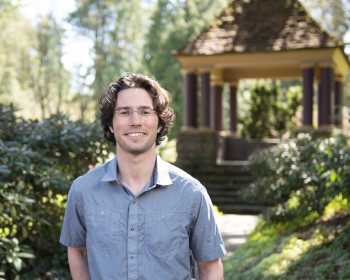NanoPoetry, a Creative Approach to Chemistry
In Nanomaterials Chemistry, a 300-level course, students’ microscopic musings become poster-worthy poetry and art.
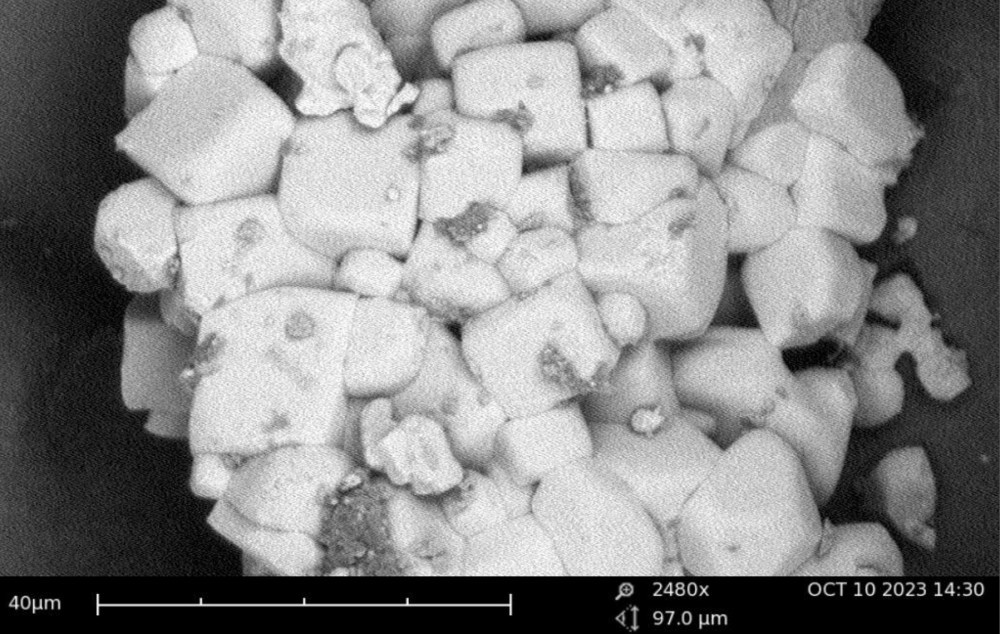
Haiku, a centuries-old poetic form in which a writer conveys expansive meaning in only 17 syllables, might seem like an unusual topic for a Nanomaterials Chemistry assignment. But students in CHEM 361—which draws both chemistry majors and nonmajors—find the smallest of poems the perfect way to describe what they discovered through electron microscopy.
-
 Microscopic sample: ground Gesha coffee from Gesha Village, Ethiopia
Microscopic sample: ground Gesha coffee from Gesha Village, Ethiopia -
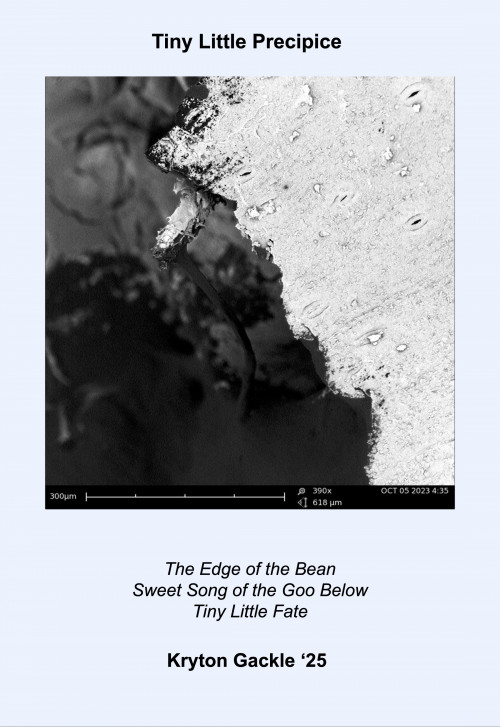 Microscopic sample: seed pod from the honey locust tree outside Olin Center
Microscopic sample: seed pod from the honey locust tree outside Olin Center
The opportunity to view everyday materials at the nano level can be awe-inspiring, as students discovered when they examined a variety of organic and inorganic samples under Lewis & Clark’s electron microscope. While conventional microscopes rely on visible light focused with lenses to magnify samples, the electron microscope aims a beam of electrons, focused with magnets, at a sample, creating images from the electrons that bounce back.
-
 Microscopic sample: salt
Microscopic sample: salt -
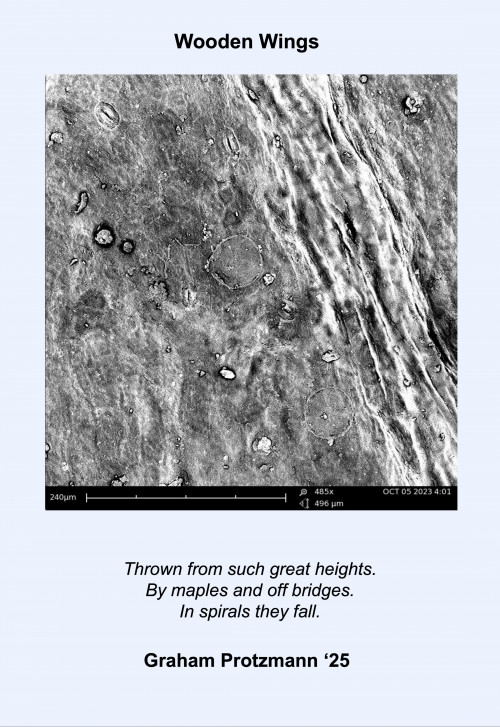 Microscopic sample: maple tree "helicopter"
Microscopic sample: maple tree "helicopter"
“Seeing so many things up close through the scanning electron microscope gave me more perspective on how much surface area can be on something that appears smooth,” noted chemistry major Owen Beale BA ’24. Beale explained that those surfaces have important implications, because “reaction rates in chemistry can be greatly affected by surface area.” Even “something that appeared pretty smooth, like a black tea leaf, could have so many fibers, nooks, and crannies on the surface.”
-
 Microscopic sample: black tea leaf
Microscopic sample: black tea leaf -
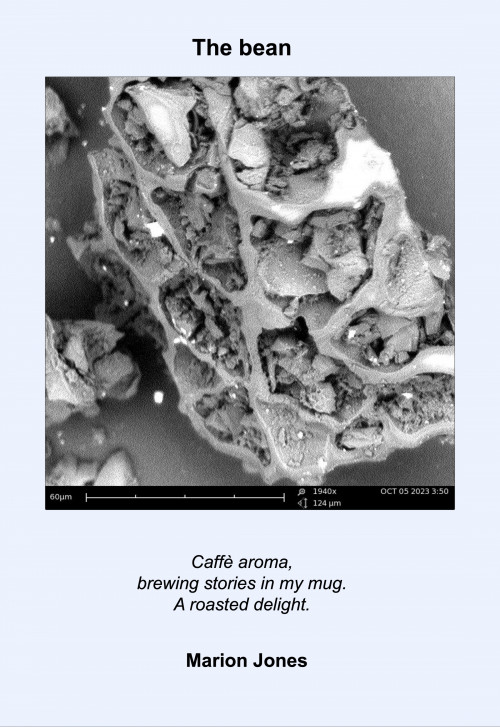 Microscopic sample: Peet’s Major Dickason’s Blend pre-ground coffee
Microscopic sample: Peet’s Major Dickason’s Blend pre-ground coffee
Regardless of major, the students agreed that organic matter, which has less uniform surfaces than inorganic matter, was visually stunning as well as scientifically interesting to examine at the nano level. Each student chose a particularly compelling image and crafted a haiku inspired by what they observed.
For Makena Andersen BA ’24, a chemistry and physics double major, inspiration came from an artificial plant in the science building lounge: a spider had died in the plant, providing an organic sample to examine. Working with the microscope, Andersen focused on the hair along the spider’s legs. Andersen isn’t the first L&C student to study the importance of arachnid’s hirsute limbs, but their poem celebrating the power of this spider’s leg hair offered a new way to share scientific findings with the broader community.
-
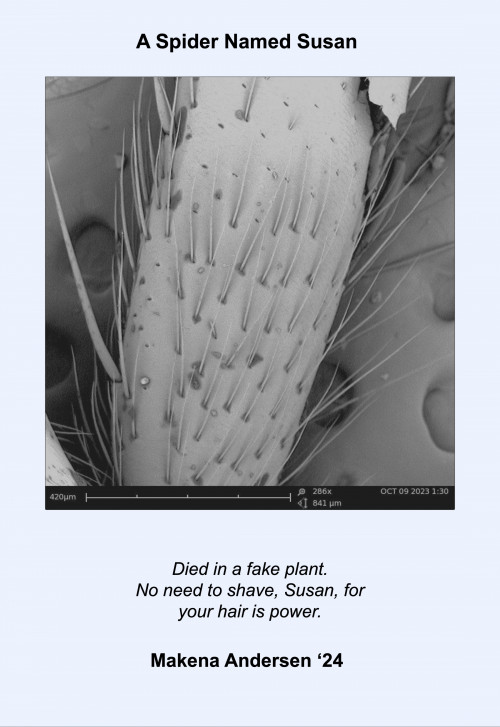 Microscopic sample: spider leg
Microscopic sample: spider leg -
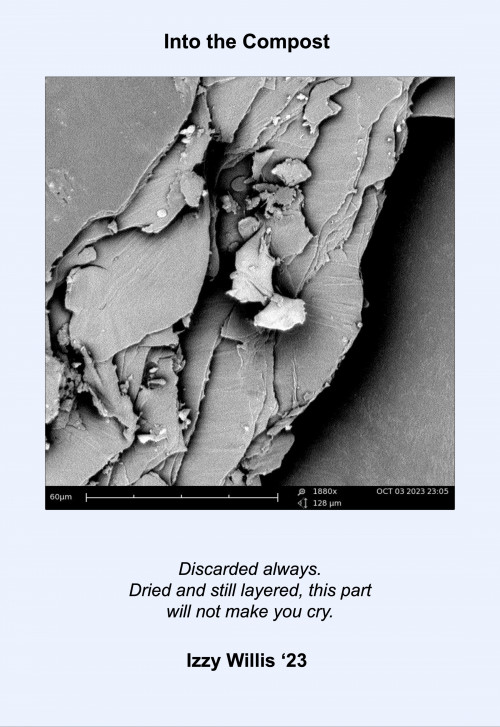 Microscopic sample: onion skin
Microscopic sample: onion skin -
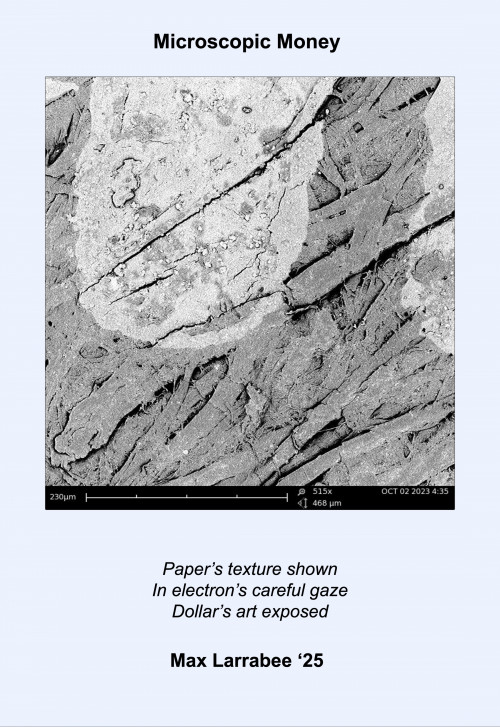 Microscopic sample: $1 bill
Microscopic sample: $1 bill
Anne Bentley, Dr. Robert B. Pamplin Jr. Associate Professor of Science, designed the assignment so that students could share their explorations of electron microscopy and nanomaterials with other members of the L&C community. She always welcomes students from a variety of majors to enroll in the course. The posters combining students’ poems with the microscope images that inspired them, on view in the Olin Center for Physics and Chemistry, provide an artistic way to inspire other undergraduates to explore nanomaterials chemistry.
More Newsroom Stories
Public Relations is located in McAfee on the Undergraduate Campus.
MSC: 19
email public@lclark.edu
voice 503-768-7970
Public Relations
Lewis & Clark
615 S. Palatine Hill Road MSC 19
Portland OR 97219

